Fine Dining with Food Scraps at wastED
From juice-pulp burgers to dumpster dive salads, the pop-up at NYC’s Blue Hill restaurant is serving delicious food waste
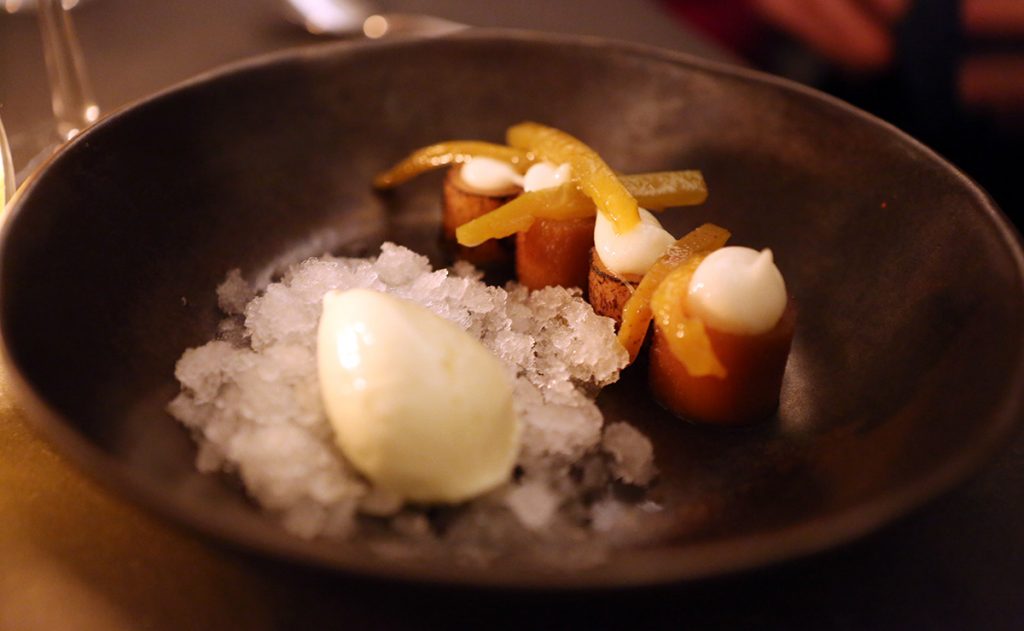
Local, seasonal ingredients weren’t enough for Chef Dan Barber of iconic NYC farm-to-table restaurant Blue Hill. Long invested in the future of food and ethical consumption, Barber has a new experiment called wastED: a pop-up running through 31 March 2015 that transforms his Greenwich Village venue into a unique dining experience where food waste and reuse are the guests of honor. From the candles made from rendered beef fat (also an edible dipping for the house bread) to the cheeseburger made from vegetable pulp, every dish (priced at an accessible $15) is a conversation starter that triggers guests to rethink their perception of waste. To complement the menu that Barber has created, each night a guest chef (from Mario Batali to Dominique Ansel and April Bloomfield) dreams up their own special.
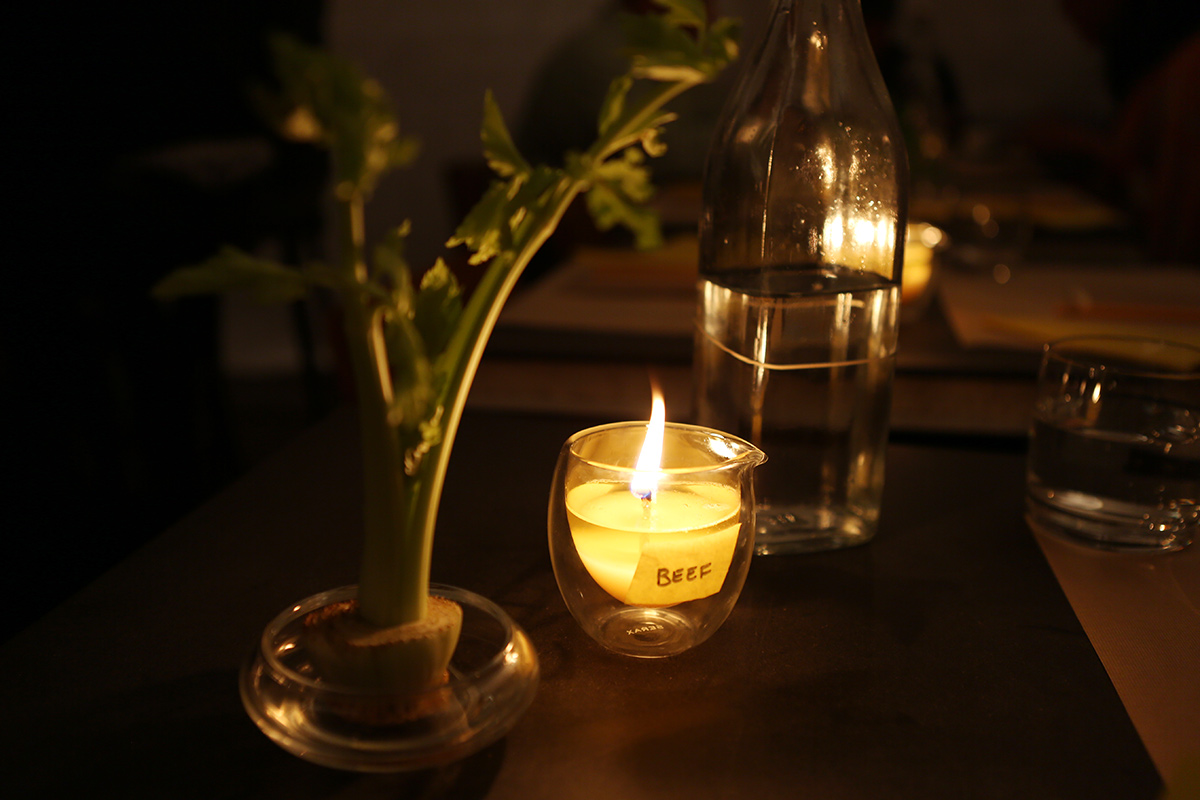
Those who have dined at Blue Hill Farm before will be surprised by its (temporary) new look, designed by Formlessfinder, the Brooklyn-based architecture practice behind the giant sand dune at Design Miami 2013. The ambience has certainly become less formal and more playful and energetic; the seating arrangement now incorporates bar-height communal tables, and the waitstaff have changed into T-shirts. Formlessfinder designed custom tabletops grown from mushroom and corn waste (through Ecovative), which become a styrofoam-like material.
Hanging over the walls and the seats is row cover (which anyone who’s driven past farmland on the highway will have seen before), a permeable fabric that protects crops from frost, wind, pests and more. It’s an ever-present reminder of where the food is coming from—the earth, not the grocery store—and how tonight’s dinner might not have been possible without it.
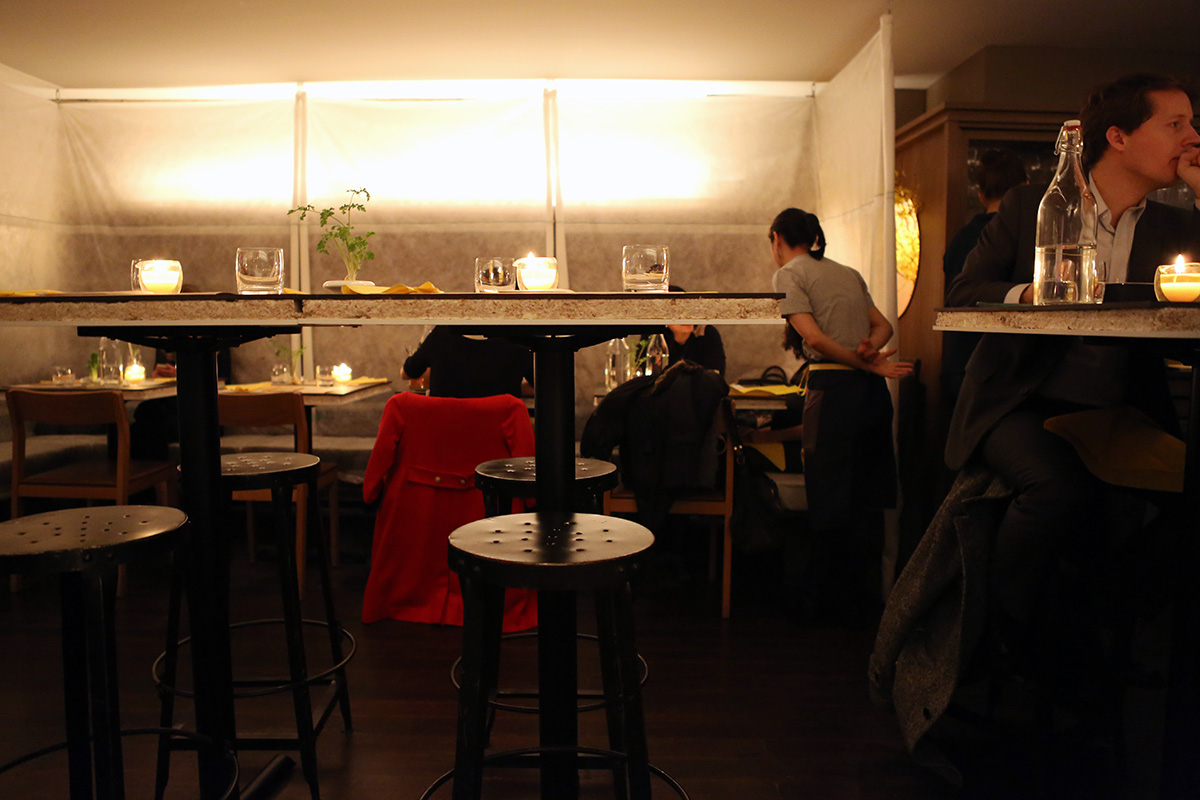
“The most surprising thing we learned from our visits to Blue Hill Stone Barns is how much overlap there is between our approach to design and Dan’s approach to food. It was
very inspiring to see him and his chefs at work in the kitchen testing menu ideas. What they’ve done is very experimental and process based—it’s about transforming material that would otherwise be ignored, undervalued, or discarded into something delicious,” Julian Rose, one half of Formlessfinder, tells CH. “That process and materials-based approach is very similar to what we do in architecture. Many of our projects reexamine raw or waste materials—things that most people probably think you couldn’t make a building out of—and look for alternative and unexpected ways to create architecture from them.”
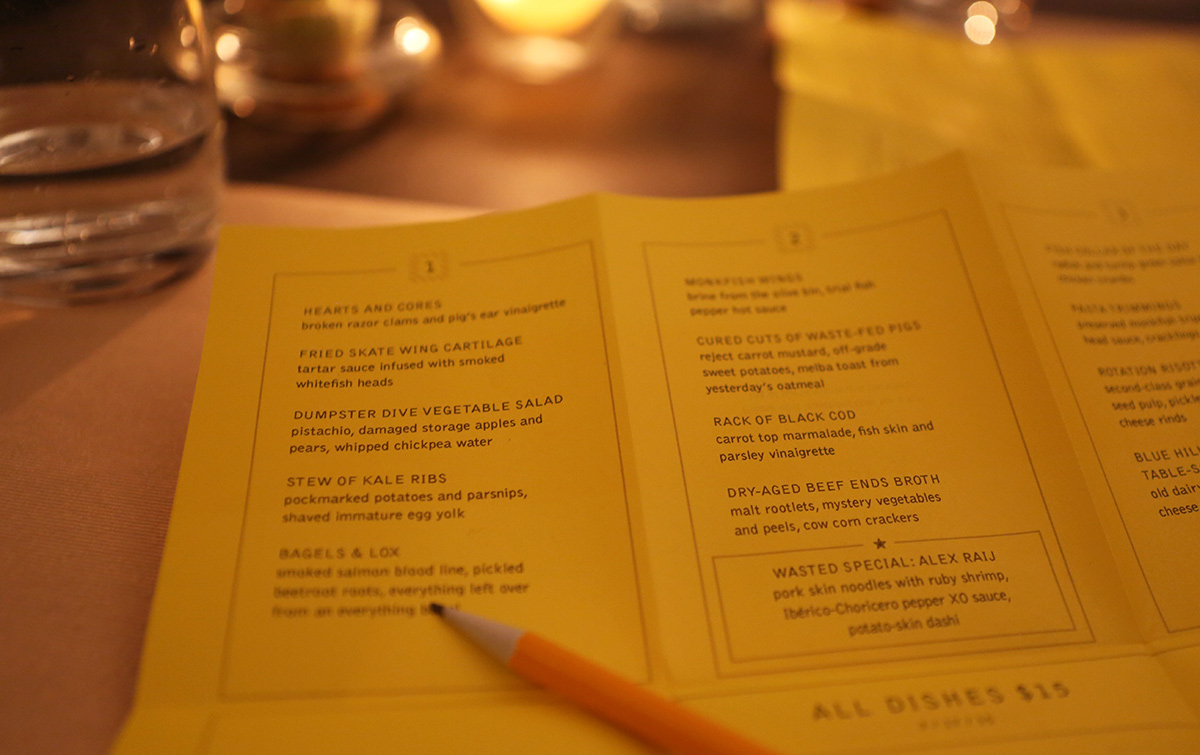
Each dish—featuring traditionally unwanted foods bits such as kale ribs, leftover pasta trimmings or cocoa pod husks—could have its own Wikipedia article, which is why the restaurant offers a helpful glossary on the back of its paper menu. But for the more curious, the waitstaff will bring over an iPad to show images of where the food is coming from, such as the pig bones carbonized into charcoal for smoking the sausage.
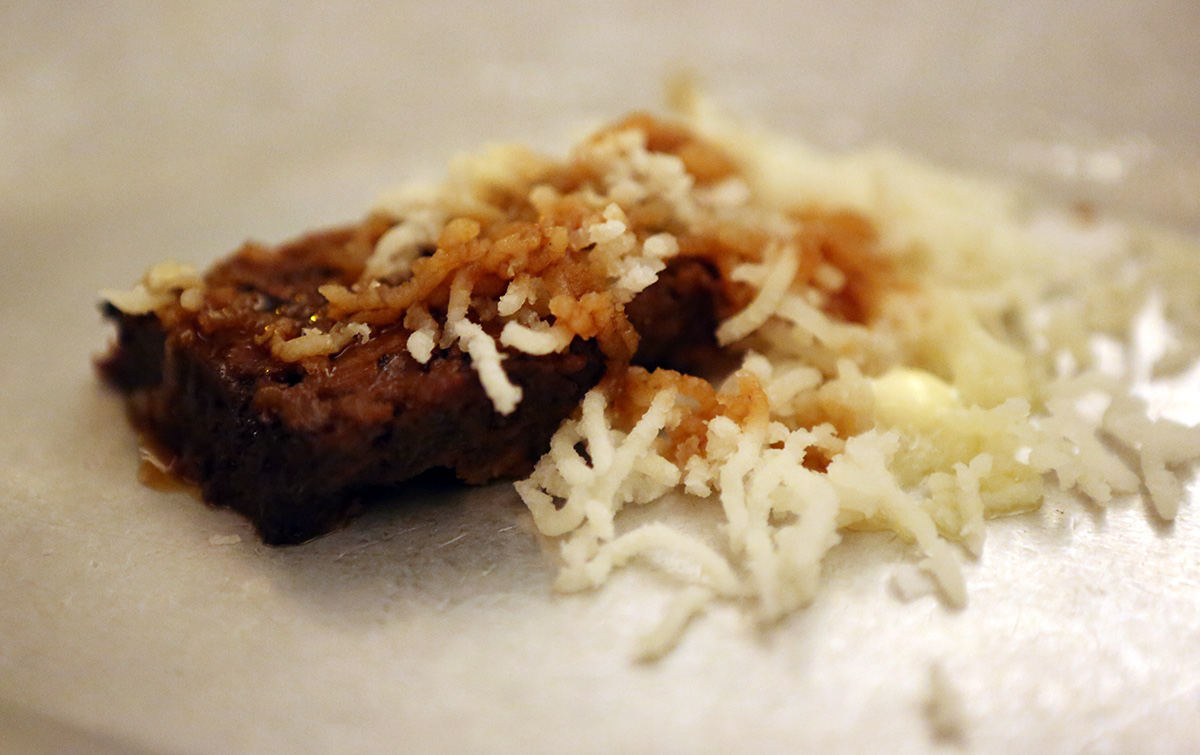
The hardest part of the night will be deciding what to order: will it be Dog Food (meatloaf made from a dairy cow past its prime, paired with unfit potatoes that have been cooked to resemble rice) or Fried Skate Wing Cartilage (crisp French fry-like snacks to be dipped in tartar sauce infused with smoked whitefish heads)? It’s exhilarating to order something that you have no idea will look like when it lands on the table—and all the dishes incite this excitement.
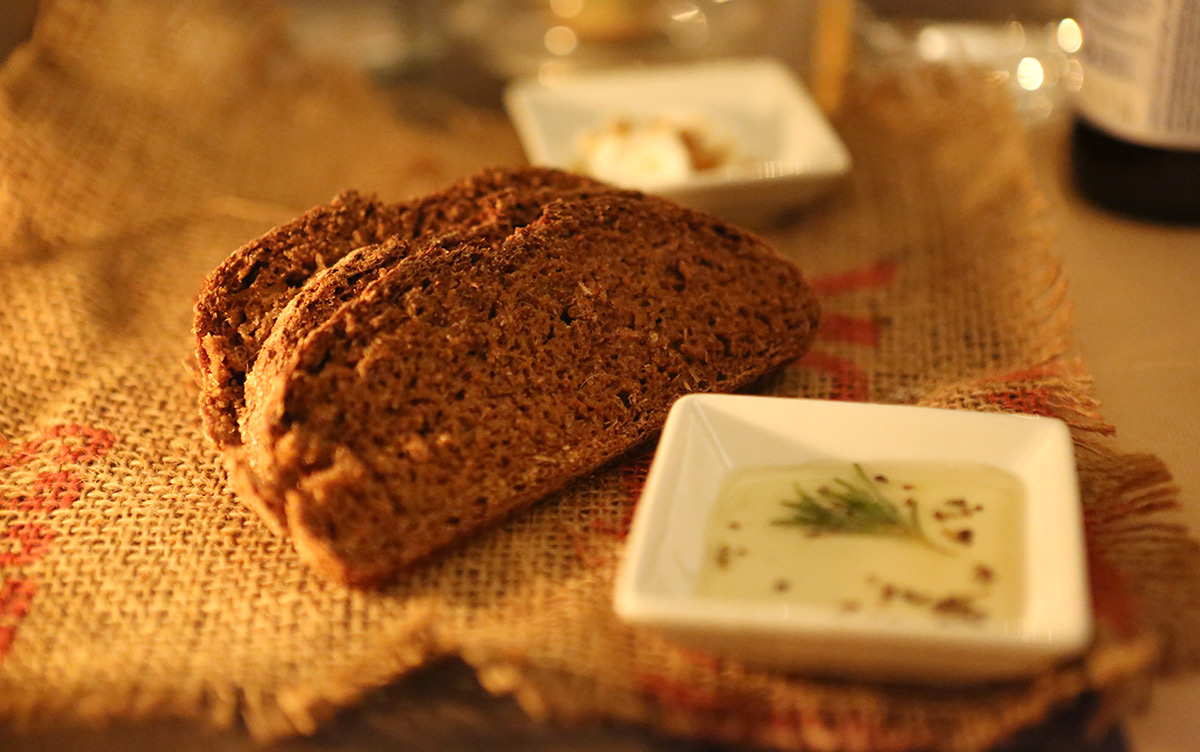
The two standouts of the night were the Fish Collar of the Day and the Juice Pulp Cheeseburger. Perhaps it was due to the difficult effort it takes to nibble any meat off the Monkfish Wings (made from the fins, which are typically discarded) that the codfish collar felt like a jackpot—and making one question why this perfectly edible and bountiful portion of the fish tends to find itself in garbage cans, not plates. The cheeseburger is its own unique category that it would almost be a misleading to simply label it vegetarian; the vegetable pulp comes from cold-pressing juicery Liquiteria, Balthazar created the buns from yesterday’s bread ends and crumbs, and the ketchup is made from bruised beets.

We finished with the Charred Pineapple Core (paired with lime leaf ice cream), as well as the Ice Cream Sundae made from milky oats (from cover crops that are planted then mowed to enrich the soil) topped with an almond press cake biscuit, which Barber tells us is his favorite item on the menu. The cookie is made from the material left over after pressing almonds for oil.
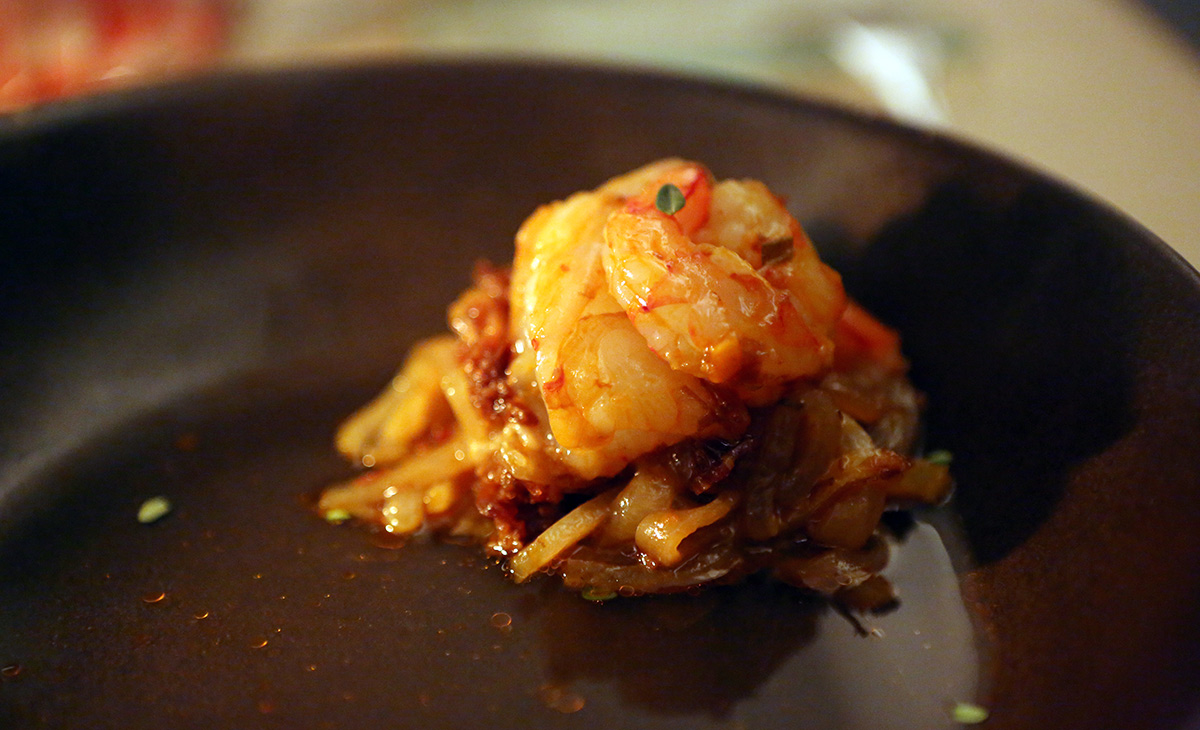
Barber executes the pop-up to great effect; wastED is a fine dining experience where tastebuds are rewarded with every dish and culinary creativity is showcased. He’s tasking guests with being part of a cultural shift by reframing their own perceptions of waste. Here’s hoping this becomes a permanent fixture like the UK’s no-waste restaurant, Silo.
Visit the wastED website to book a reservation and view the entire guest chef line-up; the pop-up will run until 31 March 2015. Blue Hill is located at 75 Washington Place, New York, NY 10011.
Images by Nara Shin












